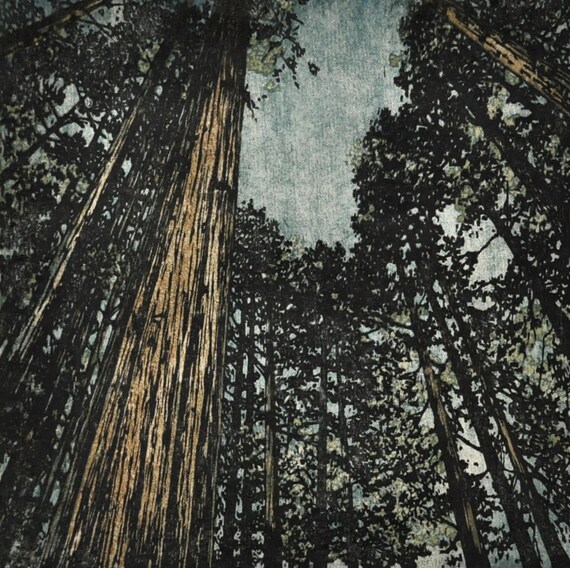

I discovered that there were many aspects of Japanese culture that resonated with me: the aesthetic of wabi-sabi, the appreciation of craft and tradition, the use of natural materials, the reverence for nature (especially in the native Shinto religion), the important role of temples and gardens, and many other concepts that have a cultural meaning in Japan. These concerns led me to travel to Japan in 2016, having been selected to take part in an International Artist’s Residency at Mokuhanga Innovation Lab, Lake Kawaguchi ( for which I was awarded a QEST scholarship), and a training in traditional water-based woodblock printmaking. These materials carry ritual power as well as being a vehicle for our environmental consciousness. In the past few years I have become increasingly interested in the ‘raw materials’ of the creative process, as well as the physical raw materials that I engage with. I have always been preoccupied with the notion of authenticity, and in seeking out the roots of my inspiration. My creative practice continued to evolve and transform, and I worked across many disciplines and in a variety of contexts including photography, textiles, printmaking, painting and, for the last 20 years, stained glass. I feel a powerful connection to the landscape : of Scotland, Ireland, Wiltshire and now, in the borders with Wales where I now live. All these components have been the raw materials for my work. I have also worked as a gardener, herbalist, artist and teacher. Environmental and social concerns then drew me to study herbal medicine whilst also working as a photographer. Brief biographyīorn on the west coast of Scotland, I trained in Fine Art (painting) at Bath Academy of Art, Corsham, where I also studied printmaking and photography. My work has been exhibited internationally and I teach woodblock printmaking workshops. "Sea of Japan" by Junichiro Sekino and "Georgetown.I am a British artist who focuses on mokuhanga, Japanese woodblock printmaking."Snow Night at Honchodori" by Kobayashi Kiyochika.It is relaxing for me to look at this image.

I love the colors used for the layers of landscape receding back and the balance between the moon and barn. The third print is Moon Setting Over Red Barn by Bridget Pilip Murphy. She also has some wonderful printmaking demonstration videos in collaboration with Lisa Toth which can be viewed on YouTube. She used watercolors and painted/printed each section one at a time, in true Provincetown printmaking fashion. This second print is Painted Village by Anne van Oppen, which I was drawn to in no small way because I'm venturing more into white line printmaking myself. Those who want to see more of his prints can check out the exchange archives.
#MOKU HANGA LANDSCAPE FULL#
I love the simplicity of the composition, including the full bleed printing and the texture in the sky and mirrored in the water. In his comments he mentioned that it is Mt Rainier as seen during nice weather in Seattle. This first print is The Mountain Is Out! by Achim Nicklis. Also, as is pretty common on this blog, everybody gets a haiku. Today I spotlight three landscapes that I especially enjoyed. The technique for this exchange was "Moku-hanga in the tradition of Japanese printmaking". I wrote about my print for this exchange - In the Tent With Bunny - last month. This is a part 1 of 2, highlighting a few of my favorite prints from Exchange #63.


 0 kommentar(er)
0 kommentar(er)
